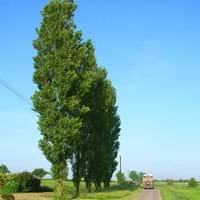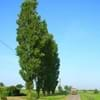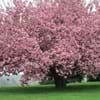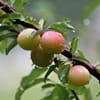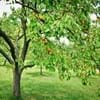Life Span
Perennial
Perennial
Origin
Europe, Northern Africa
China
Types
Not available
Not Available
Habitat
Fields, Open areas
Forest margins, gardens, Grassland, Tropical regions
USDA Hardiness Zone
3-9
8-15
Sunset Zone
A3, 1a, 1b, 2a, 2b, 3a, 3b, 4, 5, 6, 7, 8, 9, 10, 11, 14, 15, 16, 17, 18, 19, 20, 21, 22, 23, 24
H1, H2, 8, 9, 14, 15, 16, 17, 18, 19, 20, 21, 22, 23, 24
Habit
Narrow Upright/Fastigiate
Clump-Forming
Flower Color
Not Available
Not Available
Flower Color Modifier
Bicolor
Bicolor
Fruit Color
Not Available
Not Available
Leaf Color in Spring
Green, Yellow green
Light Green, Dark Green
Leaf Color in Summer
Green, Yellow green
Light Green
Leaf Color in Fall
Yellow
Light Green, Dark Green
Leaf Color in Winter
Not Available
Light Green, Dark Green
Leaf Shape
Diamond-shaped
Grass like
Plant Season
Spring, Summer, Fall, Winter
Spring, Summer, Fall, Winter
Sunlight
Full Sun
Full Sun, Partial Sun, Partial shade
Growth Rate
Very Fast
Fast
Type of Soil
Loam, Sand
Loam, Sand
The pH of Soil
Acidic, Neutral, Alkaline
Acidic, Neutral, Alkaline
Soil Drainage
Average
Average
Bloom Time
Spring
Not Available
Tolerances
Soil Compaction
Drought
Where to Plant?
Ground
Ground, Pot
How to Plant?
Not Available
Seedlings, Transplanting
Plant Maintenance
Low
Medium
Watering Requirements
Does not require lot of watering, when new, water every week
Keep the ground moist but not water-logged, Requires regular watering, Use and maintain water-efficient soaker hoses, Use Mulches to help prevent water loss during hot and windy weather, Water every two or three days during warmer months, Water twice a day in the initial period
In Summer
Less Watering
Lots of watering
In Spring
Alternate Days
Moderate
In Winter
Average Water
Average Water
Soil pH
Acidic, Neutral, Alkaline
Acidic, Neutral, Alkaline
Soil Type
Loam, Sand
Loam, Sand
Soil Drainage Capacity
Average
Average
Sun Exposure
Full Sun
Full Sun, Partial Sun, Partial shade
Pruning
Remove dead branches
Remove damaged leaves, Remove dead branches, Remove dead leaves
Fertilizers
Fertilize the soil instead of direct applying, organic fertlizers
All-Purpose Liquid Fertilizer
Pests and Diseases
Healthy tree
Red blotch
Plant Tolerance
Soil Compaction
Drought
Flowers
Insignificant
None
Flower Petal Number
Not Available
Single
Foliage Texture
Medium
Medium
Foliage Sheen
Glossy
Matte
Allergy
Anaphylaxis, Asthma, Hay fever, Runny nose, Watery eyes
no allergic reactions
Aesthetic Uses
Showy Purposes
Beautification
Beauty Benefits
Not Available
Not Available
Environmental Uses
Agroforestry, Shadow Tree, Windbreak
Air purification
Medicinal Uses
Diaphoretic, Diuretic
Not Available
Part of Plant Used
Not Available
Whole plant
Other Uses
Economic Purpose, Food for animals, Grown for shade
Culinary use, Used in construction, Used in Furniture, Used in making musical instruments, Used in paper industry
Used As Indoor Plant
No
No
Used As Outdoor Plant
Yes
Yes
Garden Design
Feature Plant, Screening / Wind Break, Shade Trees, Street Trees
Container, Feature Plant, Hedges, Screening / Wind Break, Tropical
Botanical Name
POPULUS Nigra Italica
BAMBUSA multiplex 'Alphonso-Karrii'
Common Name
Lombardy Poplar
Alphonse Karr Bamboo, Clumping Bamboo, Hedge Bamboo
In Hindi
ऐस्प
अल्फोंस Karr बांस
In German
Lombardei Pappel
Alphonse Karr Bamboo
In French
peuplier de Lombardie
Alphonse Karr Bamboo
In Spanish
Lombardía álamo
Alphonse Karr Bambú
In Greek
Λομβαρδίας λεύκες
Alphonse Karr Μπαμπού
In Portuguese
Lombardia Poplar
Alphonse Karr Bamboo
In Polish
Lombardia Topola
Alphonse Karr Bamboo
In Latin
Lombardiae Poplar
Alphonse Karr Bamboo
Phylum
Tracheophyta
Not Available
Class
Magnoliopsida
Not Available
Order
Malpighiales
Poales
Family
Salicaceae
Poaceae
Clade
Angiosperms, Eudicots, Rosids
Angiosperms, Commelinids, Monocots
Tribe
Not Available
Bambuseae
Subfamily
Not Available
Bambusoideae
Number of Species
Not Available
Not Available
Importance of Lombardy Poplar and Alphonse Karr Bamboo
Want to have the most appropriate plant for your garden? You might want to know the importance of Lombardy Poplar and Alphonse Karr Bamboo. Basically, these two plants vary in many aspects. Compare Lombardy Poplar and Alphonse Karr Bamboo as they differ in many characteristics such as their life, care, benefits, facts, etc. Every gardener must at least have the slightest clue about the plants he wants to plant in his garden. Compare their benefits, which differ in many ways like facts and uses. The medicinal use of Lombardy Poplar is Diaphoretic and Diuretic whereas of Alphonse Karr Bamboo is Not Available. Lombardy Poplar has beauty benefits as follows: Not Available while Alphonse Karr Bamboo has beauty benefits as follows: Not Available.
Compare Facts of Lombardy Poplar vs Alphonse Karr Bamboo
How to choose the best garden plant for your garden depending upon its facts? Here garden plant comparison will help you to solve this query. Compare the facts of Lombardy Poplar vs Alphonse Karr Bamboo and know which one to choose. As garden plants have benefits and other uses, allergy is also a major drawback of plants for some people. Allergic reactions of Lombardy Poplar are Anaphylaxis, Asthma, Hay fever, Runny nose and Watery eyes whereas of Alphonse Karr Bamboo have no allergic reactions respectively. Having a fruit bearing plant in your garden can be a plus point of your garden. Lombardy Poplar has no showy fruits and Alphonse Karr Bamboo has no showy fruits. Also Lombardy Poplar is not flowering and Alphonse Karr Bamboo is not flowering . You can compare Lombardy Poplar and Alphonse Karr Bamboo facts and facts of other plants too.
